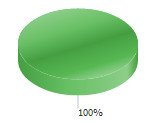I’m about to start a Proof of Concept (POC) for a 12c upgrade of one of our databases. The production database in question is running on Oracle Linux inside a VMware virtual machine, so the starting point I’ve been given for the POC is a clone of the whole VM…
Probably the biggest decision I’ve got to make is “to PDB or not to PDB” *. I mentioned it on Twitter earlier and got some conflicting opinions. I guess the pros and cons of the PDB approach go something like this in my head.
Pros:
- The multitenant architecture is the future of Oracle. Depending on which rumours you believe, it’s possible that 12.2 will no longer allow the pre-12c style instances. Putting it off is delaying the inevitable.
- As long as you only use a single PDB, there is no extra cost.
- The multitenant architecture has some neat features related to cloning, especially remote clones. That potentially makes provisioning new environments pretty quick.
- Even with a single PDB per CDB, there are potential advantages regarding patching and upgrades. Caveats apply as always.
- I’m going to upgrade to a pre-12c style instance first anyway, so I will have a natural fallback position ready to go if I need it.
- It would be good to invest the time up front to convert stuff now, rather than wait a few years to clean up the mess of CRON jobs and connections using SIDs, rather than services. This choice would force our hand.
- If some of the technologies we are using are not going to “play well” with the multitenant architecture, I would rather know now than later.
Cons:
- Using a PDB is definitely going to break a number of things for us, especially CRON jobs that run scripts using OS authentication. See here.
- Once the decision has been made to “switch the multitenant architecture on”, it would be really easy for someone to create an extra PDB and incur additional licensing costs. As far as I’m aware, there is nothing to restrict the number of PDBs to 1, to prevent an uninitiated DBA from copying a script from the net and creating more. If someone knows an undocumented parameter for this I would be interested in knowing it. Note, “_max_pdbs” isn’t the answer here! 🙂
- I’m going to upgrade to a pre-12c style instance first, so why add on the extra effort of cloning that to a PDB?
- Why make life hard for yourself? You can use 12.1 as a half-way house and make the final step later.
I don’t think there is really a right or wrong answer in this debate. I could probably put forward a convincing argument in favour of either option. I’m leaning on the side of the “to PDB” choice. If this proves to be a no-go, then I’ll start a POC of a pre-12c style instance… 🙂
Despite my leaning for the PDB choice, I am interested to know what others think, especially those that have done something a bit more extensive than running this stuff on their laptop. 🙂
Cheers
Tim…
* I forgot to mention previously, we will almost definitely be going with a single PDB per CDB (the free option) initially. So this is not a “consolidate using multitenant” issue from the outset.
